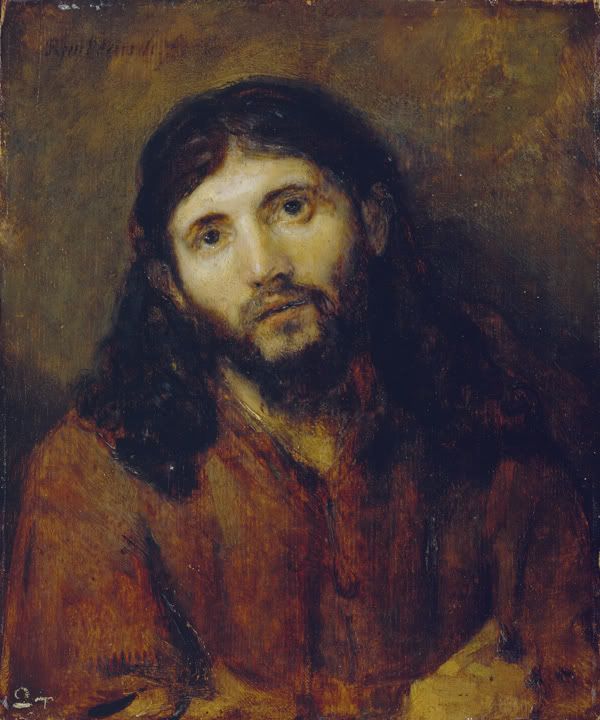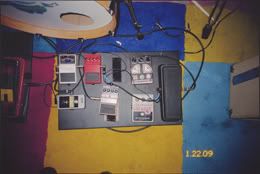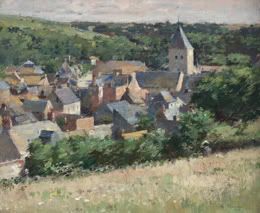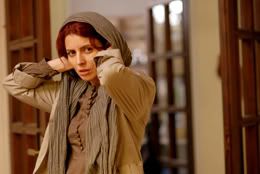|
|
Director's Letter
 | |
Last spring I received a letter from a Viennese lawyer claiming that the DIA's painting King David Handing the Letter to Uriah (1611) by Pieter Lastman had been looted by the Nazis from Austrian collector Dr. Richard Neumann. The three documents provided to back up this claim allowed the construction of a plausible narrative whereby the collector had been granted permission to leave Austria for France at the very end of 1938 with a small group of works of art and, following the Nazi invasion of France in 1940, had to flee France for the Americas, leaving the paintings with an individual of Hungarian origin. Compared to prices for Van Gogh paintings, the value of a Lastman is minor indeed, but the claimant (grandson of the original owner) was more concerned in reconstituting his grandfather's collection and had just successfully pursued a claim against Vienna's Kunsthistorisches Museum (KHM) for a major altarpiece by Maerten van Heemskerck. It is generally accepted that, in the case of Holocaust-related claims, the burden of proof rests with the defending museum (or, as we say informally, the work is guilty until proven innocent). As the guidelines also call for the institution charged with giving priority to such claims, the DIA's curator of European paintings, Salvador Salort-Pons, immediately set to work investigating the Lastman's provenance (ownership history). We knew from our records that the work came to the DIA in 1960, purchased, using funds from private donors, from the Archives of American Art (established at the DIA in 1953), which had been given the painting by a founding member. What then, had happened to it in the intervening years?
 | | |
Pieter Lastman, Dutch; King David Handing the Letter to Uriah, 1611; oil on oak panel. Gift of Mr. and Mrs. John N. Lord | |
When I was a graduate student at the Courtauld Institute, one professor routinely opened tutorial sessions by asking us to discuss a work of art brought in for his opinion--usually on the identity of the artist. On one occasion, a student (not me, thank goodness, though it easily could have been!) looked with ostentatious concentration at an Italian seventeenth-century drawing only to be told "Why are you looking at the front? Look at the back." Sure enough, when our Lastman was examined in the conservation lab, an ink stamp on the back of the stretcher immediately shifted the story. The stamp indicated that the painting must have been in the Republic of Czechoslovakia during that country's short existence between 1918 and 1938. Further research by Salvador in European archives established that the Lastman painting had actually been part of an enforced exchange between the collector and the KHM whereby the museum received two Italian paintings for the Lastman and a sum of money. Exactly how the Lastman got from Czechoslovakia to the KHM to be used as barter is a mystery, but as Czechoslovakia was partitioned by the Nazis in October 1938 it is possible that the history of its theft or coercion begins there and not in Vienna two months later.
By this time, the Viennese lawyer was working with a highly regarded historian of Holocaust-related art issues and we were freely exchanging all information. Salvador's research established a detailed timeline for the Viennese collector after he left Europe: first locating in Cuba and then New York, where he died in 1958. The painting was sold to the Archives of American Art's patron by a long-since defunct New York private gallery, the records of which have disappeared without a trace. How though, did it make its appearance in New York, having been abandoned (with someone who turned out to be an obscure private art dealer) in France? And how, we asked the claimants, did we know that the work was not sold by the collector when he fled Europe? As this is exactly the kind of situation where the burden rests with the current owner, I was braced for an unpleasant decision. It was, therefore, with astonishment that, a couple of weeks later we received an e-mail from Vienna with a German document attached, "Paintings and other Objet d'Art in the possession of Dr. Richard Neumann and located in New York" (my emphasis). On the list was the DIA's Lastman. It was undated but our Viennese contact stated that it had to have been drawn up in 1953. Whatever its earlier history and whatever exactly happened between 1958 and 1960, the legitimacy of the transfer of ownership from Dr. Neumann to the DIA is no longer in question, and the claim against us has been formally withdrawn.

Graham W. J. Beal
Back to top |
|

Exhibitions
Rembrandt and the Face of Jesus
Through February 12
Special Exhibition Galleries: South
Extra hours have been added to the schedule for the last weeks of this popular exhibition. On Saturdays, February 4 and 11, the exhibition is open until 10 p.m.; on Sundays, February 5 and 12, until 8 p.m. Although usually closed on Tuesday, the DIA is open February 7 from 10 a.m. to 4 p.m. Advanced ticket purchases are strongly recommended as time slots have been selling out. For up-to-date information on ticket availability, check the museum's Facebook page, Twitter feed, and website.
Parking has been at a premium, but additional lots are available if the Cultural Center lot, on John R across from the museum, is full. The Rackham parking garage on Warren between John R and Woodward is open Mondays through Fridays, 7 a.m. to 10 p.m. On weekends, the Macabee structure located at 61 Putman Street on the corner of Cass and Putman is open Saturdays from 7:30 a.m. to 10 p.m. and Sundays from 10 a.m. to 8 p.m. Valet parking is available at both the Farnsworth and Woodward entrances during museum hours. To ease the congestion at the Cultural Center lot, both the John R and Brush St. entrances will be open.
Members see the exhibition free, but complimentary reserved, timed tickets are necessary, available at the DIA Box Office, online at www.dia.org, or by calling 1.866.DIA.TIXS (866.342.8497). Remember, there is no handling or service fee when ordering members' tickets. For more information, call the Membership HelpLine at 313.833.7971. For the general public, timed tickets are $16 for adults and $8 for youth ages 6 to 17. A $3.50 charge applies to nonmember tickets not purchased at the DIA.
This exhibition has been organized by the Detroit Institute of Arts, the Musée du Louvre, and the Philadelphia Museum of Art. In Detroit, the exhibition is generously supported by The Cracchiolo Family. Additional support has been provided by the City of Detroit.
This exhibition is supported by an indemnity from the Federal Council on the Arts and the Humanities.
Above: Rembrandt van Rijn, Dutch; Head of Jesus, 1648/1650; oil on oak panel. Detroit Insitute of Arts
Back to top
 Detroit Revealed Detroit Revealed
Photographs, 2000-2010
Through April 29
Albert and Peggy de Salle Gallery of Photography
 | | |
Ari Marcopoulos, American, born Amsterdam; Detroit #2, 2010; pigment print. Museum Purchase, DeRoy Photographic Acquisition Endowment Fund
| |
In the past decade, many photographers have paid particular attention to Detroit's abandoned buildings and vacancy with little thought given to actual residents and the unique ways in which they live out their lives in the Motor City. New York-based Ari Marcopoulos looked beyond the city's often stark urban exterior on a visit to the city in 2010, discovering a slice of the underground Detroit music scene in the home of teenagers Hunter and Shane Muldoon. Brothers and musicians, the pair teamed with their dad, Brian, to form a punk rock band, The Muldoons, which began performing in 2005. Marcopoulos made photographs and a video of the brothers while they experimented with guitar pedals and audio effects on the floor of their bedroom. A unique glimpse into Detroit life as well as a lasting record of their musical union (The Muldoons no longer perform together), Marcopoulos says his work reveals "something that just stands for life lived."
Marcopoulos is known for his fresh documentary approach to subjects that chronicle the diversions and rituals of the youth culture at the end of the twentieth century and beginning of the twenty-first. In this exhibition, his photographs and video join the images created by seven other photographers that, together, portray Detroit in terms of its people and its industry as well as its timeworn buildings and prairie-like neighborhoods.
Click here for information on a related DFT film series and here for information on a bus tour with one of the photographers.
This exhibition has been organized by the Detroit Institute of Arts. Support has been provided by Quicken Loans and Team Detroit. Additional support has been provided by the City of Detroit. Support for the catalogue has been provided by Furthermore: a program of the J. M. Kaplan Fund.
Back to top
Once Upon a Time
Prints and Drawings that Tell Stories
Through May 13
Schwartz Galleries of Prints and Drawings
 | | |
Hendrik Goltzius, Netherlandish, Icarus, 1588; engraving. Museum Purchase, Alan, Marianne and Marc Schwartz Fund in honor of DIA 125th Anniversary
| |
Greek mythology is rife with tales of gods, heroes, and monsters, subject matter that lends itself to the theme of this exhibition: the telling of stories through pictures, with and without words. Recently acquired prints by Hendrick Goltzius are a perfect example. They depict the Four Disgracers--mortals who so angered the Greek gods that the men were thrown off Mount Olympus. Each figure is seen tumbling through space, surrounded by a moralizing inscription commenting on the individual's particular misdeed: Tantalus for revealing the secrets of the gods to mankind; Phaeton for recklessly driving the chariot of his father, the sun god; Ixion for attempting to seduce Zeus's wife, Hera; and the best known, Icarus, for flying too close to the sun. Icarus ignored his father's warning not to near the sun least it melt his wax wings. When the wings did melt, Icarus fell to his death in the sea. According to the inscription, "It is something divine to want to acquire knowledge, the gift of God, but man must keep to his limits. As long as everyone has his own wisdom and does not keep the right measure in mind, Icarus gives his name to the Icarian Sea."
Back to top
Gift of a Lifetime
The James Pearson Duffy Collection
Through March 18, 2012
Special Exhibitions Central
 | |
Theodore Robinson, American, 1852-96; Giverny, 1889; oil on canvas. Bequest of James Pearson Duffy
| |
It was a chance encounter at the DIA that led James Duffy to Detroit's Cass Corridor and the artists whose work he would later enthusiastically collect. As the oft-told story goes, Duffy haunted the museum on Sunday mornings, a quiet time when he could revel in the art of virtually every period. One day in 1972, he struck up a conversation with a young artist, Gary McKinney, who was working in the museum shop. McKinney informed Duffy that a very exciting art scene was developing nearby in the Cass Corridor. Duffy made his way there to explore, eventually getting to know a number of artists.
The art he discovered there was founded on materials that looked industrial or as if discarded on the streets. It was a style that was gritty, urban, and urgent in its emotional power. It offered a very different kind of beauty and aesthetic experience to what was traditional in the arts. Duffy was comfortable in that milieu having helped his parents collect school of Paris works and American landscape paintings (above, left). In his Grosse Pointe apartment, Duffy integrated the art he inherited with his own recent purchases, creating bracing juxtapositions that were an exhilarating exercise in looking at works of art for their intrinsic qualities, both expressive and formal.
Back to top |
|
 Detroit Film Theatre Detroit Film Theatre

| | |
Leila Hatami as Simin in A Separation. Photo by Habib Madjidi ©, Courtesy of Sony Pictures Classics | |
It's Oscar® time and the DFT offers two opportunities to see potential 2012 winners before the award ceremony on Sunday, February 26. First up is the always popular Academy Award Nominated Short Films, playing the weekends of February 10 and 19. The short-film nominees are traditionally among the year's most creative and surprising films of any kind, yet they're also the most difficult to find. The DFT presents both types in one program with a brief intermission. The last weekend of the month, check out the Iranian film A Separation, nominated for best foreign language picture. It's a searing contemporary family drama that ingeniously morphs into a gripping legal thriller.
A late addition to the DFT schedule After the Factory, part of the Detroit Revealed on Film series, playing Thursday, February 2, at 7 p.m. The film asks the question what happens after the factory leaves town and looks at Detroit and the collapse of the auto industry and Lodz, Poland, and the demise of the textile industry for answers. Grown in Detroit, playing on Thursday, February 23, focuses on the urban gardening efforts managed by the Catherine Ferguson Academy, a public school of 300 pregnant teenagers and young mothers. As part of the curriculum, the girls are taught agricultural skills on the school's farm, located behind the school building.
Click here for information on Black History Month related films. The complete DFT schedule is available here. Back to top |
|
 Black History Month Black History Month
There's plenty to do at the DIA in celebration of Black History Month, including musical performances, movies, lectures, and family-friendly activities. Start the month off with the Detroit Film Theatre's  Being Elmo: A Puppeteer's Journey, the story of how Kevin Clash, who from childhood dreamed of working with his idol, master puppeteer Jim Henson, became the voice of one of Sesame Street's most beloved characters. This film plays Friday, February 3, through Sunday, February 5, and is not recommended for children younger than six. On Saturday, February 18, catch the movie Richard Hunt, Sculptor, at 4 p.m. and stay to meet the artist in an onstage conversation with Valerie Mercer, curator of the GM Center for African American art, followed by a question and answer session. The film and discussion are free with museum admission. Being Elmo: A Puppeteer's Journey, the story of how Kevin Clash, who from childhood dreamed of working with his idol, master puppeteer Jim Henson, became the voice of one of Sesame Street's most beloved characters. This film plays Friday, February 3, through Sunday, February 5, and is not recommended for children younger than six. On Saturday, February 18, catch the movie Richard Hunt, Sculptor, at 4 p.m. and stay to meet the artist in an onstage conversation with Valerie Mercer, curator of the GM Center for African American art, followed by a question and answer session. The film and discussion are free with museum admission.
The Alain Locke Award, in its twentieth year of honoring artists and scholarly contributors in the field of African American art, goes this year to Artis Lane, who has depicted Coleman Young, Nelson Mandela, Jacqueline Kennedy, Rosa Parks, President Ronald Reagan, and Oprah Winfrey in her painting and sculpture. Her recent images symbolize humanity's emergence into spiritual awareness. The artist's talk is at 2 p.m., February 12.
Family programs for the month include an artist demonstration by muralist Hubert Massey, one of the few African American artists painting in true fresco style, and a puppet performance of Underground Railroad, Not a Subway, the story of a young boy who decides to escape slavery by running North. Musical performances feature harpist Brandee Younger (left), a saxophone quarter, steel band, and a tribute to Detroit jazz legends.
For a complete list of lectures, family activities, and musical performances with times and dates, click here. Back to top |
|
 Also In February Also In February
Kick off the Chinese Year of the Dragon (which began January 23) at the DIA with a traditional lion dance performance. The Asian Martial Arts Studio of Ann Arbor presents a Classical Southern-Style Lion Dance with live percussion accompaniment, including gongs, drums, and cymbals, followed by a demonstration of various Kung Fu forms. Performances of the lion dance are February 5 at 1 and 3 p.m.
The lion dance is an extension of the Chinese martial arts and is always performed by martial artists. All the movements of the lion are based on stances and positions from Kung Fu as taught at the Asian Martial Arts Studio. The Chinese consider the lion dance a vehicle for dispensing the good blessings of heaven to the whole community. Done during the New Year's celebration and on other auspicious occasions, it represents the hopes and aspirations of the Chinese people for all the good things life holds.
 | | |
Michelle Andonian, American; Rouge Steel, Transfer Crane, 2004 (printed in 2011); pigment print. Gift of the Artist in honor of Bill Rauhauser | |
 On February 25, take a bus tour of Southwest Detroit with photographer Michelle Andonian, whose pictures of the neighborhood are included in the DIA exhibition Detroit Revealed: Photographs, 2000-2010. Andonian, who grew up in Southwest Detroit, shares stories about her development as a photographer in this vibrant community and the factories that have been central to its history. The bus leaves the DIA at 10 a.m. and tour stops include views of the Rouge Plant (left) and Zug Island, followed by lunch at Vince's Restaurant. The bus returns to the DIA at 1:30 p.m. for a tour of Diego Rivera's Detroit Industry murals and Detroit Revealed. The bus tour is a joint venture of Inside Detroit and the DIA. Tickets are $47 for DIA members and $60 for all others and includes lunch and admission to the museum. To register and purchase tickets, click here. On February 25, take a bus tour of Southwest Detroit with photographer Michelle Andonian, whose pictures of the neighborhood are included in the DIA exhibition Detroit Revealed: Photographs, 2000-2010. Andonian, who grew up in Southwest Detroit, shares stories about her development as a photographer in this vibrant community and the factories that have been central to its history. The bus leaves the DIA at 10 a.m. and tour stops include views of the Rouge Plant (left) and Zug Island, followed by lunch at Vince's Restaurant. The bus returns to the DIA at 1:30 p.m. for a tour of Diego Rivera's Detroit Industry murals and Detroit Revealed. The bus tour is a joint venture of Inside Detroit and the DIA. Tickets are $47 for DIA members and $60 for all others and includes lunch and admission to the museum. To register and purchase tickets, click here.
Back to top |
|
|
|
|
|
Detroit Institute of Arts
5200 Woodward Avenue
Detroit, Michigan 48202
www.dia.org
313.833.7900
Comments or questions about the newsletter? Please contact us: comments@dia.org
ADMISSION
$8 adults, $6 seniors, $4 children
The museum is free for members
Contact the Membership HelpLine at
313.833.7971 or membership@dia.org
For group sales (15 or more) contact 313.833.1292 or dia.org/grouptours
CATERING & RENTALS
Call 313.833.1925 or
catering@dia.org |
HOURS
Museum
Mon, Tue CLOSED
Wed, Thur 10 a.m.-4 p.m.
Fri 10 a.m.-10 p.m.
Sat, Sun 10 a.m.-5 p.m.
PARKING
Valet parking is available at the Farnsworth entrance on Fridays, Saturdays, and Sundays, during regular museum hours. The price per car is $8.
Lighted, secure self-parking is available in the Cultural Center parking lot, between John R and Brush, behind the museum.
Ford Free Second Sundays are generously supported by the Ford Motor Company Fund. Next Ford Free Sunday, February 12. |
CaféDIA
313.833.7966
Wed, Thur 11:30 a.m.-2:30 p.m.
Fri 11:30 a.m.-2:30 p.m., 5-9 p.m.
Sat, Sun 11:30 a.m.-3 p.m.
Kresge Court Coffee Stop
Wed, Thur 10 a.m.-3 p.m.
Fri-Sun 10 a.m.-4 p.m.
Museum Shop
313.833.7944
Open during museum hours |
|
|
|
|
|
















